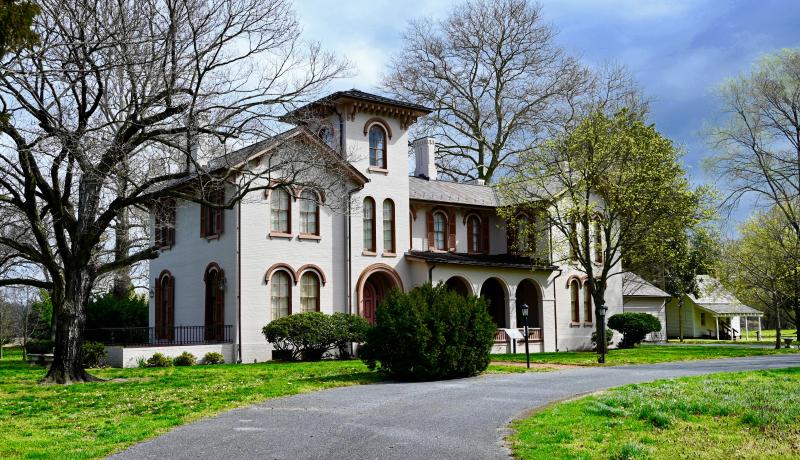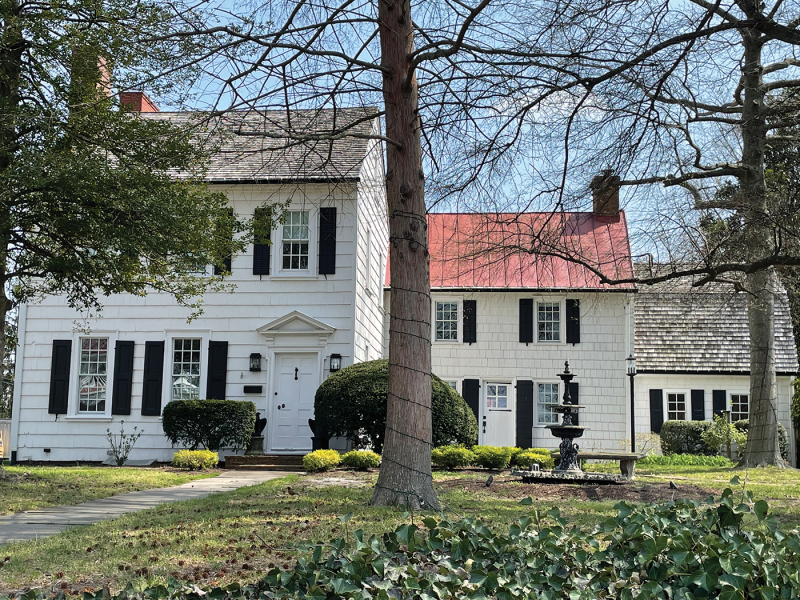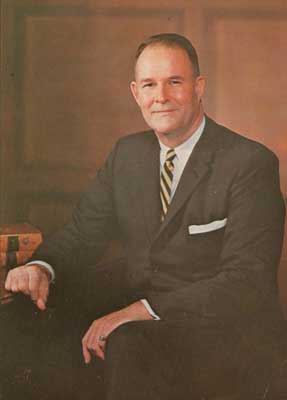Sussex County is home to nearly 20 governors
I've always wondered how many governors came from Sussex County. I knew that no one from south of the canal has been governor since the 1960s, but I was shocked to find out there were 20 men who served as governor who had their roots (or most of them) in Sussex County.
There have been 71 governors of Delaware, with several serving more than one term.
From 1777-92, the governor was known as the president of Delaware. John McKinly, the first president, only served in office for seven months. That's because his house in Wilmington was raided, and he was arrested and imprisoned by the British following their victory at the Battle of Brandywine.
After he was released, he refused to retain the office and lived out his life as a doctor. The Irishman was the only state governor born outside the United States.
The list of the state's first few governors reads like a who's who of the nation's founding fathers with Thomas McKean, George Read, Caesar Rodney and John Dickinson serving as presidents. All played significant roles in the Revolution and most signed either the Declaration of Independence or U.S. Constitution or both.
One of the threads that runs through the list of Sussex County governors is that almost all were successful businessmen and active in politics beyond the governorship. Many played significant roles in the growth of their communities. The governors lived interesting (and mostly profitable) lives. One left the country during the Civil War, another was a poultry industry pioneer and another was a Revolutionary War hero.
Daniel Rogers, the third governor, from 1797-99, can be claimed by both Sussex and Kent counties because he was a farmer, milling operator and brick maker in Cedar Creek and Argo's Corner south of Milford, and lived in the Causey Mansion in Milford, where he helped raise 12 children. He also operated a tavern in Cedar Creek Village.
Governors from Lewes
David Hall, 15th governor from 1802-05, is the first governor with all his roots in Sussex County. He was a Lewes resident who distinguished himself as a colonel in the Continental Army. He's also the namesake of the Daughters of the American Revolution chapter in Lewes. Each year, members hold a memorial service at his grave at Lewes Presbyterian Church. The Col. David Hall House along Kings Highway is on the National Register of Historic Places.
Daniel Rodney served as the 19th governor from 1814-17. He and his wife, Sarah Fisher, had eight children; he was a merchant and sailor. He was captured by the British two times, and escaped, during the Revolutionary War. Rodney also served in the U.S. Senate and House of Representatives. He's buried at St. Peter's Episcopal Church.
Caleb Rodney served as the 23rd governor from 1822-23. He owned a store at the corner of Second and Market streets that was damaged during the British bombardment in 1813.
Ebe Tunnell, 50th governor who served from 1897-1901, taught school in Lewes and Milford, and owned Blackwater General Store in Lewes, where he sold drugs and hardware. He's one of two Delaware governors who was not married.
Governors from Milton
David Hazzard, 28th governor who served from 1830-33, lived at 327 Union St. He was a merchant and granary owner, and was a member of Goshen United Methodist Church. The Hazzard House is on the National Register of Historic Places. In 1844, he became an associate justice of the Delaware Supreme Court. He was the only person to have been appointed to a position on the Superior Court without a formal legal education.
Hazzard led during a time of great growth in Delaware, with construction of new schools, roads and bridges. He died in 1864 at the age of 83. His son, David, was a Civil War veteran.
James Ponder, 42nd governor who served from 1871-75, lived at 414 Federal St. and expanded his father's business, and was a shipbuilder, farmer and banker. The Gov. James Ponder House is on the National Register.
Joseph Maull was 34th governor, serving from March 2, 1846, to May 3, 1846, dying in office. Born in Lewes, he moved to Milton in 1803 and became the town's doctor. He was a veteran of the War of 1812 and formed what is now Wagamons Pond, where he operated grist, saw and bark mills.
Samuel Paynter, 26th governor who served from 1824-27, operated a general store at an area known as Drawbridge, where the Route 1 bridges cross the Broadkill River. He was also director of Farmer's Bank in Georgetown for 20 years. He's buried at St. Peter's Episcopal Church.
Townsend and Carvel
The last two governors from Sussex County had distinguished careers in the state and their communities.
John G. Townsend Jr., 55th governor, from Selbyville, who served from 1917-21, was known as the Strawberry King and founded Townsend Inc., a large poultry processing and farming business still in operation. As a farmer, he opened his own bank, Baltimore Trust Co., and raised chickens and grew corn and soybeans. During his time in office, strides were made in women's suffrage, school reform, and new and better highways. He also served two terms as a U.S. senator from 1929-41.
Elbert Carvel, 61st and 64th governor, from Laurel, who served from 1949-53 and 1961-65, was the second Democrat governor in nearly five decades. Standing 6-feet-6-inches tall and known as Bert, he founded Valiant Fertilizer Co. in Laurel. The University of Delaware Research and Education Center near Georgetown is named in his honor. His long list of accomplishments includes formation of the state's first Supreme Court, construction of the first Delaware Memorial Bridge span and formation of the Delaware Public Service Commission. He died in Laurel in 2005 at the age of 94.
Other Sussex governors
Nathaniel Mitchell, 16th governor, from Laurel, 1805-08.
John Collins, 22nd governor, from Collins Pond near Seaford, 1821-22. The mill operator married Jane Hall, the daughter of former Gov. David Hall.
William B. Cooper, 32nd governor, from Laurel, who served from 1841-45. He also served as Sussex County justice of the peace and sheriff. The farmer lived at the corner or Fourth and King streets. His only son, William, fought for the Confederacy in the Civil War and was captured and sent to Fort Delaware in 1862 off the coast of Delaware City, where he escaped.
William H.H. Ross, 37th governor who served from 1851-55. Ross, who had 10 children, was operator of a large farm at Ross Plantation in Seaford. At 36, he was the youngest man elected to the office. Ross, a slaveholder, was a staunch supporter of the rights of the slave states and his son fought for the Confederacy. Fearing for his reputation and livelihood, he fled the country and lived in England until the war was over in 1865. Although he lost some of his investments, he became a successful farmer in part thanks to the new railroad line that crossed his land. The Gov. William H.H. Ross House is on the National Register of Historic Places.
William Cannon, 40th governor, from Bridgeville, who served from 1863-65, was considered the wealthiest man in Sussex County. He was a farmer, newspaper publisher, businessman, banker and operated a large peach orchard. He had two sons who fought for the Union in the Civil War and died at Gettysburg. Because of the volatility of the times, his election was supervised by federal troops. His son, Phillip, served as the state's first lieutenant governor in 1901.
Charles Stockley, 45th governor, from Georgetown, who served from 1883-87, also served as state treasurer and county sheriff. He was a teacher, store owner in Millsboro, farmer, real estate agent and major peach grower. He lived on Cedar Lane southeast of Georgetown. The Stockley Center outside Georgetown is named in his honor because of his advocacy of services for the “feeble-minded.”
Joshua Marvil, 48th governor, from Laurel, who served less than one year, dying in office in 1895. He founded Marvil Package Co., a manufacturer of baskets and crates, where he produced as many as 2 million peach crates a year. He also published the area's first newspaper, the Gazette, in 1889. Also a shipbuilder, he was known as a mechanical genius.
Simeon Pennewill, 53rd governor, from Greenwood, who served from 1899-1907.
Governors from Milford
Milford is the official home of governors, with eight having roots in the city, including the first downstate governor, known as President Daniel Rogers.
Joseph Haslet, 18th and 24th governor who served from 1811-14 and for six months in 1823.
Charles Polk Jr., 27th and 30th governor who was born in Bridgeville and later moved to Milford, and served from 1827-30 and 1836-37. The American Revolution veteran served in the Col. David Hall (15th governor) regiment.
Peter F. Causey, 38th governor who served from 1855-59, lived in the Causey Mansion.
William Tharp, 36th governor who served from 1847-51, owned a large farm in the Farmington area and moved to Milford when he was elected governor. He was the grandfather of future Gov. William Watson.
William Burton, 39th governor who served from 1859-63, lived in the Parson Thorne Mansion. He lost his first run for the office to his neighbor, Peter Causey, in 1854.
William Watson, 49th governor who served from 1895-97.
Ruth Ann Minner, 72nd governor who served from 2001-09.


























































